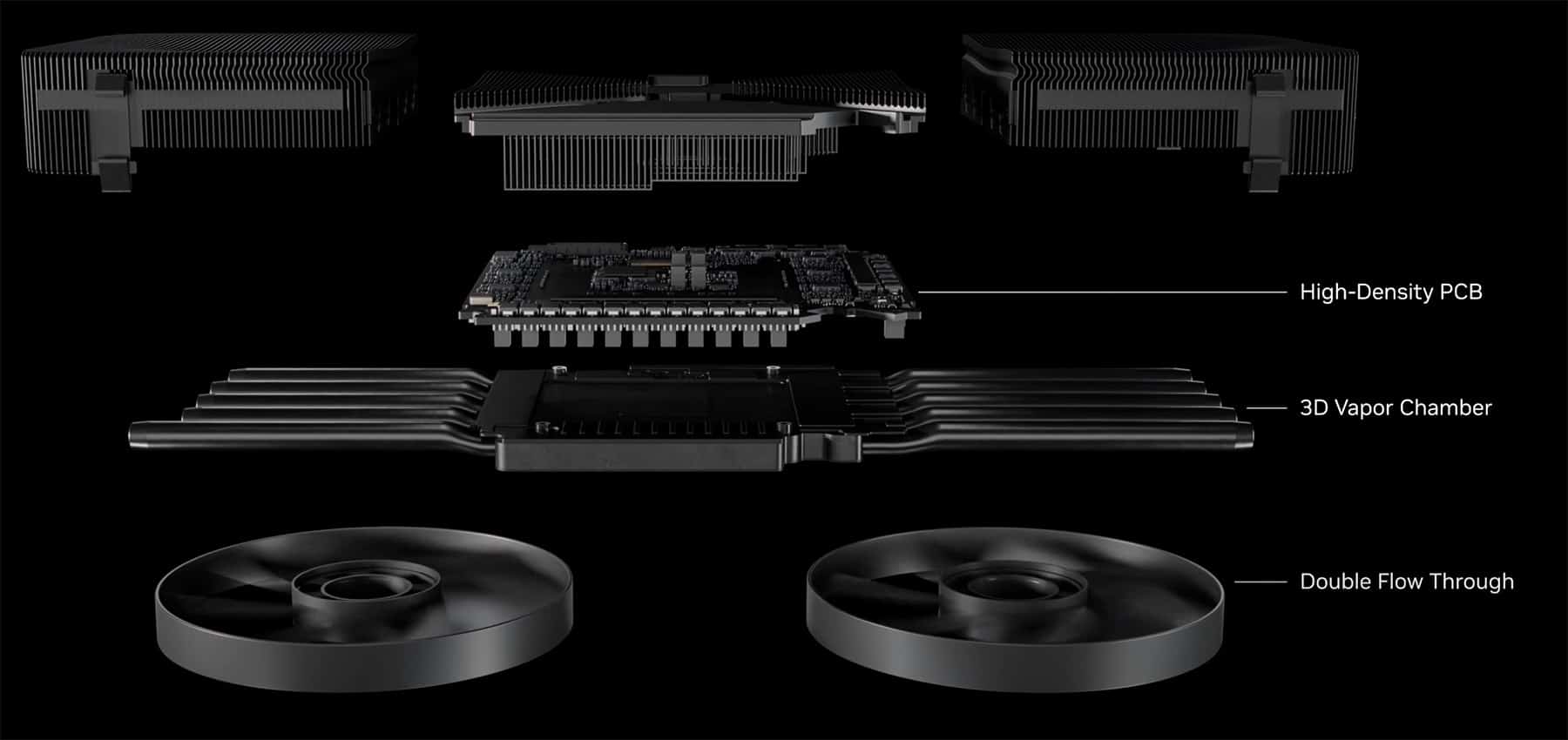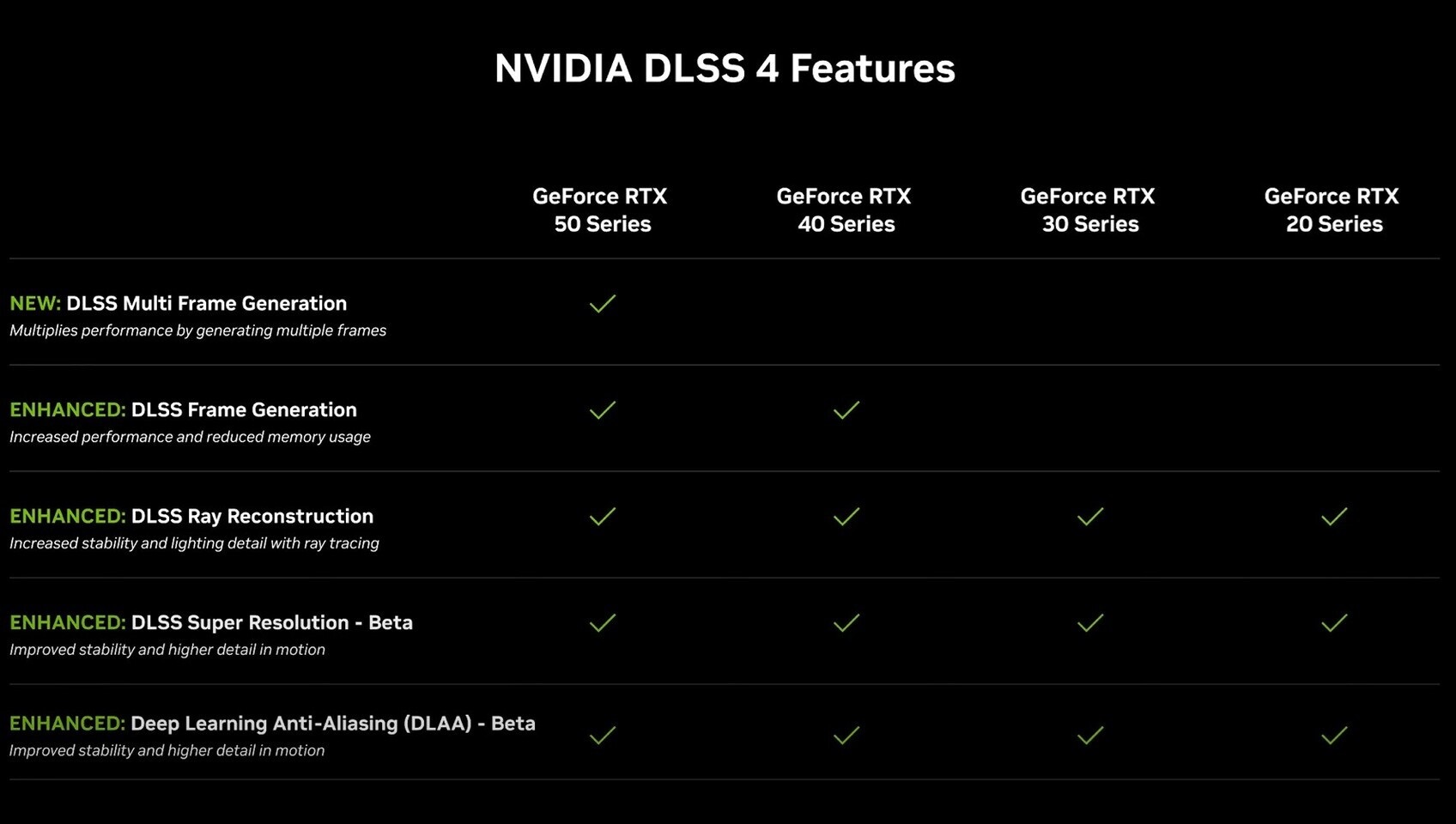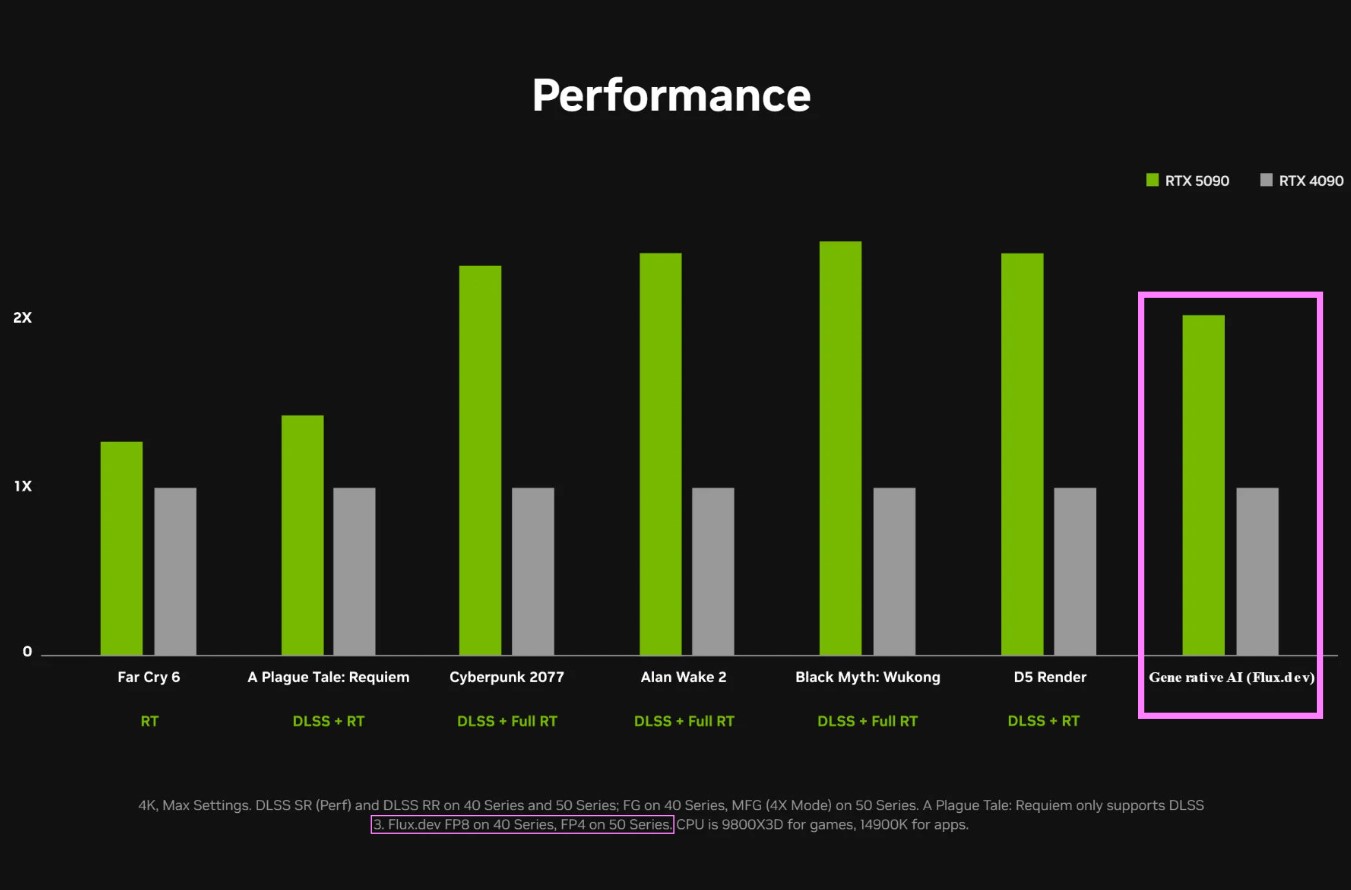Ignoring all the issues with the pricing, Nvidia knocked it out of the park with the RTX 4090 in terms of engineering an excellent product. Now, we have the official announcement of its successor: the Nvidia GeForce RTX 5090. Come along as we explore the difference between these two cards!
Comparison Table
| Technical Specs | NVIDIA RTX 4090 | NVIDIA RTX 5090 |
|---|---|---|
| GPU Die | AD102 | GB202 |
| Process Node | TSMC 5nm | TSMC 4nm |
| Architecture | Ada Lovelace | Blackwell |
| SMs | 128 | 170 |
| GPU Shaders | 16384 | 21760 |
| Tensor Cores | 512 | 680 |
| RT Cores | 128 | 170 |
| Boost Clock (MHz) | 2520 | 2407 |
| Memory Bus Size | 384-bit | 512-bit |
| VRAM (GB) | 24 | 32 |
| Texture Mapping Units | 512 | 680 |
| TFLOPS FP32 (Boost) | 82.6 | 104.8 |
| Bandwidth (TB/s) | 1.01 | 1.79 |
| TBP (watts) | 450 | 575 |
| Launch Date | Oct 2022 | Jan 2025 |
| MSRP | $1599 | $1999 |
Technical Differences

This section will deal with the most important differences in the specifications of these two cards. However, the numbers might not reflect the real-world performance, a snippet of which we have already seen; more on that later.
GPU Cores
Nvidias fundamental processing units for parallel computations, which they have self-dubbed their CUDA Cores, saw a 33% improvement on the new card. The RTX 4090 has an impressive 128 CUDA Cores, but they have been raised to 170 on the Backwell GPU.
This links to an increase in the rest of the fundamental units of their GPUs, too, which translates into a similar increase in the AI-focused Tensor Cores and the real-time Ray Tracing-focused RT cores.
Clock Speeds
The RTX 5090 actually has had a downgrade with its boost clock speeds, with the RTX 4090 boosting about 4.7% higher than the newer card.
However, this might not be an accurate representation of the performance as doing some back-of-the-napkin math, we see that the RTX 5090 still maths out to about 27% better performance than the 4090, taking into account its higher core count.
This 27% estimation will change with the other specs taken into account, and also, the architectural differences will take a bigger role in showing off the performance of this new card.
VRAM
The RTX 5090 leaps to GDDR7 memory, up from the GDDR6 VRAM that the RTX 4090 utilizes. It also helps that the new card jumps to 32 gigabytes of video memory, compared to the still very impressive 24 gigabytes of VRAM that the RTX 4090 comes with.
The bus width also goes from 384 bits to 512 bits with the Blackwell card, which will also unlock the full potential of the GPU die and restrict any memory limitations for many years to come.
Bells And Whistles

Nvidia also debuted its new DLSS 4.0 technology with the Blackwell lineup of cards. Some features of this technology will come to all the RTX cards, but the multi-frame generation will sadly be exclusive to the new Blackwell cards. The features for all RTX cards include better Ray Reconstruction, enhanced Super Resolution, and Deep Learning Anti Aliasing.
The new tech allows for multi-frame generation, which means their new technology can insert more generated frames between the physically rendered ones. Nvidia claims that this makes 4K 240FPS a reality, even with all the other intensive features like Ray-Tracking, heck, and maybe even path tracing turned on.
Additionally, Nvidia’s Reflex, which is their latency-reducing tech, also receives an uplift with the debut of Reflex 2. This improvement is said to reduce latency from about 27ms on the old tech down to only 14ms with the new cards. Reflex 2, unlike DLSS 4, is said to come out to the rest of the RTX cards in Nvidia’s lineup.
A Note On The Real-World Performance

Linus Tech Tips’ exclusive first look at the new card showed that it performed almost twice as well as the RTX 4090 in Cyberpunk. Though, as Linus mentioned, this showcase was done with curated settings, the results were still very impressive.
Latest Updates
Thank you! Please share your positive feedback. 🔋
How could we improve this post? Please Help us. 😔
[Comparisons Expert]
Shehryar Khan, a seasoned PC hardware expert, brings over three years of extensive experience and a deep passion for the world of technology. With a love for building PCs and a genuine enthusiasm for exploring the latest advancements in components, his expertise shines through his work and dedication towards this field. Currently, Shehryar is rocking a custom loop setup for his built.
Get In Touch: shehryar@tech4gamers.com


 Threads
Threads

